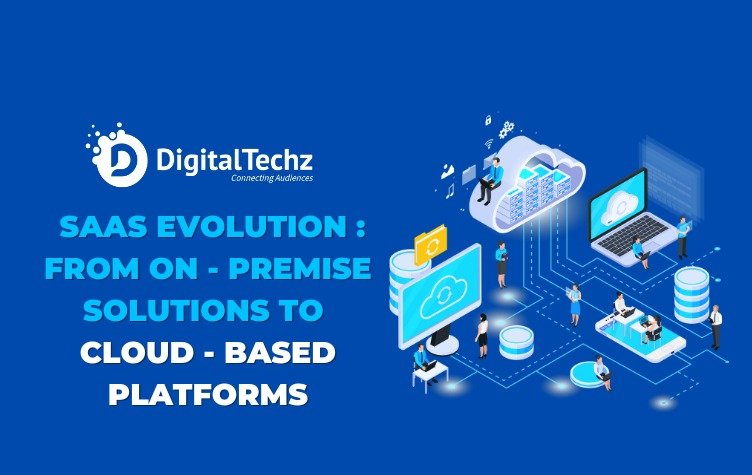SaaS Evolution: From On-Premise Solutions to Cloud-Based
Introduction
In the dynamic landscape of software development, Software as a Service (SaaS) has emerged as a groundbreaking innovation, transforming the traditional on-premise solutions into the flexible and agile cloud-based platforms we see today. This shift has revolutionized how companies operate, providing numerous benefits in terms of cost, efficiency, and scalability.
The Transition from On-Premise Solutions to SaaS platforms
Traditionally, on-premise solutions required organizations to manage and host software applications locally. This setup necessitated dedicated space for servers, significant hardware infrastructure, and a robust IT team to handle maintenance, updates, and security. However, this model came with high upfront costs, prolonged administration times, and limited flexibility.
The advent of SaaS changed this landscape dramatically. SaaS platforms, accessible via the internet, offer subscription-based services that eliminate the need for heavy initial investments. This transition has allowed businesses to focus on their core competencies while enjoying seamless software deployment and reduced capital dissipation.
The Rise of SaaS platforms in Cloud-Based Platforms
The rise of SaaS denoted a change in outlook in the product business. SaaS platforms enable organizations to:
Flexibility:
SaaS platforms are inherently flexible, allowing businesses to easily adjust features and scale operations as needed. This ensures optimal resource utilization and growth.
Cost Efficiency:
SaaS eliminates the need for significant upfront investments in infrastructure and hardware. Instead, organizations pay on a per-user basis, significantly reducing the total cost of ownership.
Maintenance and Automatic Updates:
SaaS platforms handle software maintenance and updates seamlessly, ensuring organizations always have access to the latest features and security patches without disrupting operations.
Collaboration and Accessibility:
SaaS enhances collaboration by providing anywhere access to applications, fostering teamwork among distributed teams, and supporting remote work environments.
Enhancing SaaS Capabilities with PaaS and IaaS
Today’s SaaS solutions are further enhanced by integrating with Platform as a Service (PaaS) and Infrastructure as a Service (IaaS):
PaaS: This cloud-based platform offers a complete development and deployment environment, enabling companies to build, deploy, and scale applications without worrying about the underlying infrastructure. PaaS accelerates the development cycle, making it a vital tool for modern organizations.
IaaS: IaaS allows organizations to leverage infrastructure for hosting applications while maintaining control over operating systems, applications, and middleware. This hybrid approach offers the benefits of SaaS with customizable infrastructure management.
Future Trends and Opportunities in SaaS Evolution
The eventual fate of SaaS is promising, with a few patterns forming its development
Enhanced Security Measures:
SaaS providers are continually investing in advanced security measures, including multi-factor authentication, proactive threat detection, and secure encryption, to address cybersecurity concerns.
Artificial Intelligence and Machine Learning Integration:
SaaS platforms are incorporating AI and ML to provide intelligent automation, accurate data analytics, and enhanced user experiences.
Edge Computing Integration:
By processing data closer to the source, edge computing reduces latency and improves real-time decision-making, offering a significant advantage for SaaS applications.
Conclusion
The evolution of SaaS from on-premise solutions to cloud-based platforms has been pivotal in shaping software development and deployment. This transition has optimized operational processes, reduced costs, and empowered businesses to adapt to the ever-changing demands of the digital era. As SaaS continues to evolve, it promises even greater innovations, enabling organizations to deliver high-quality services and stay competitive in today’s fast-paced market.
Get connected with Digitaltechz is the Best Software development company in India.
Frequently Asked Questions (FAQs)
Software as a Service (SaaS) has evolved as a result of cloud computing in what ways?
Cloud computing enhances SaaS by providing the infrastructure and platforms needed for hosting applications. SaaS, IaaS, and PaaS work together to offer comprehensive solutions that simplify deployment, development, and scaling of software applications.
What is the evolution of Software as a Service (SaaS) and how does it differ from traditional on-premise solutions?
SaaS evolution refers to the shift from on-premise, locally hosted software solutions to cloud-based platforms. Unlike on-premise solutions, SaaS offers internet-based access to software, providing benefits like cost-efficiency, automated updates, and enhanced flexibility.
What are the key advantages of adopting Software as a Service (SaaS) over on-premise solutions?
SaaS offers several advantages, including cost efficiency, accessibility, flexibility, and seamless maintenance and updates. It eliminates the need for upfront hardware investments and provides scalable, anywhere access to applications with automatic updates and maintenance.
